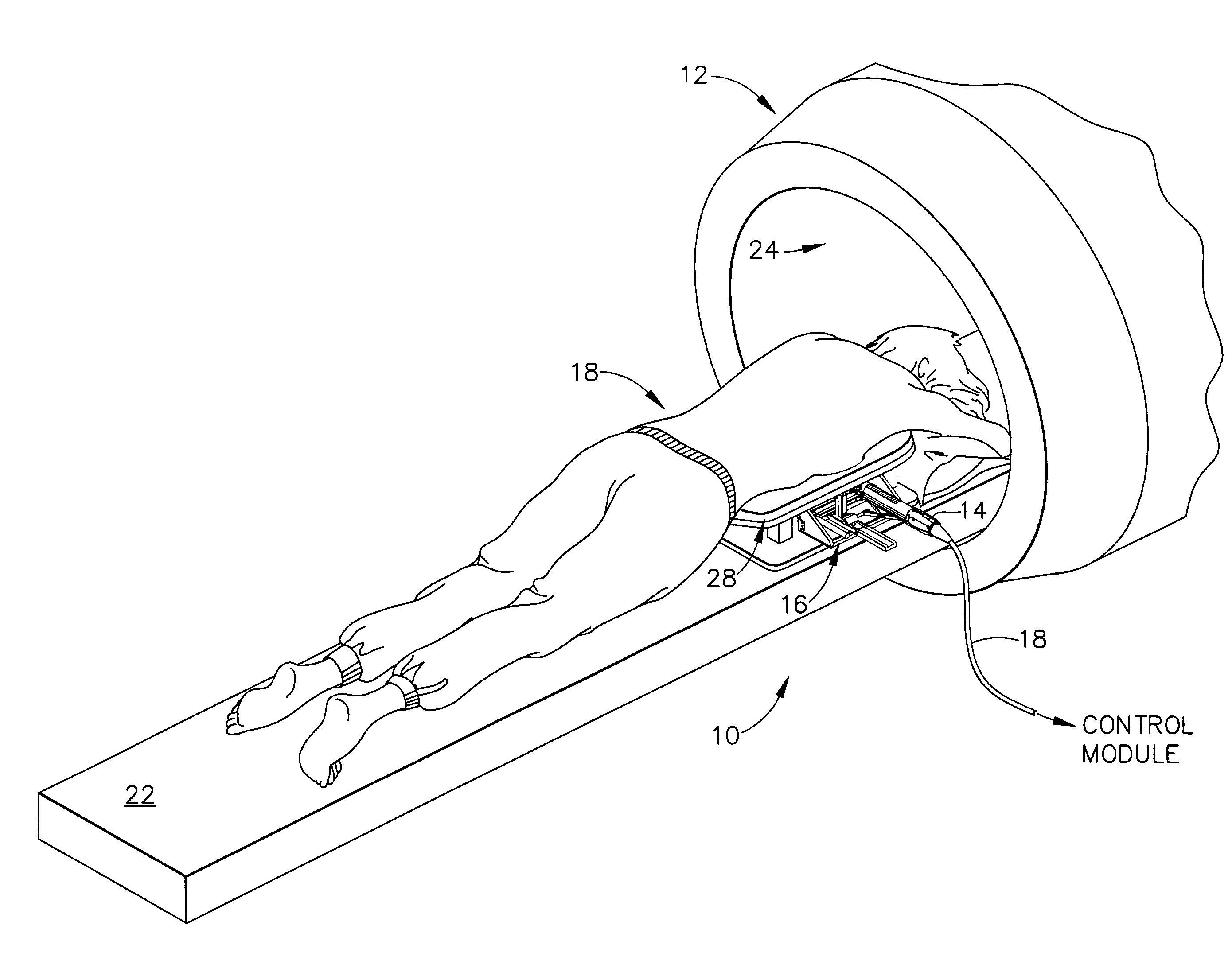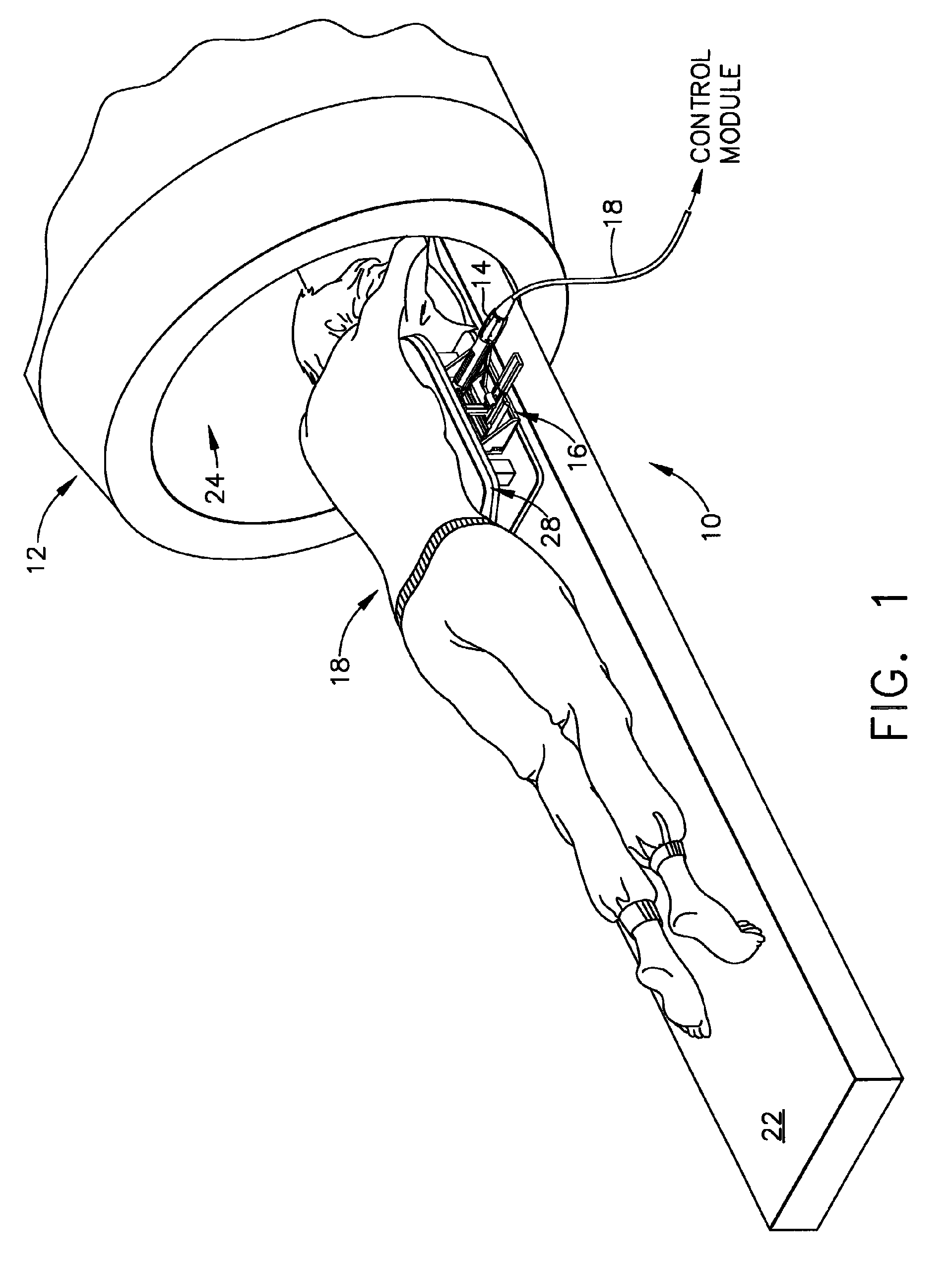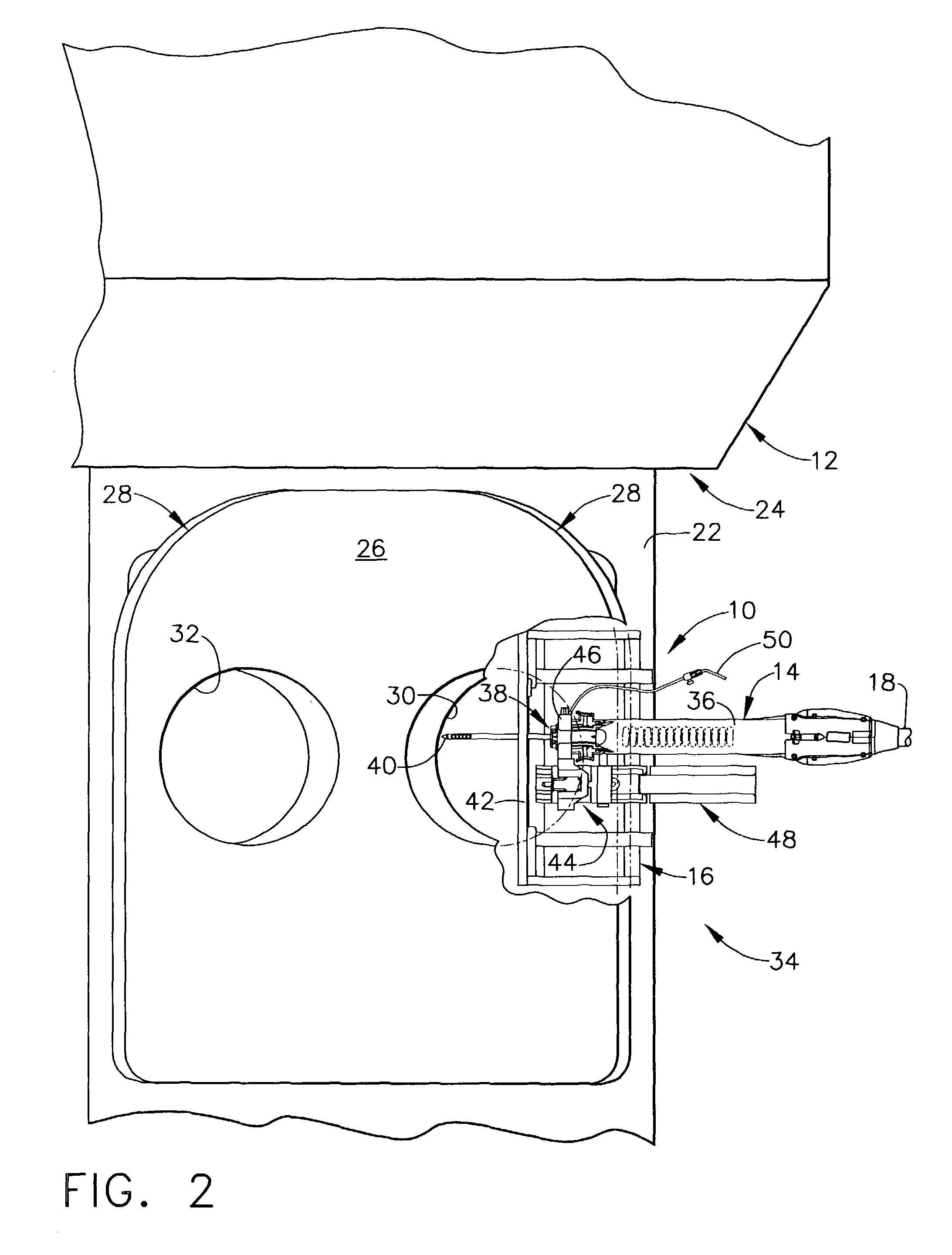Localization mechanism for an MRI compatible biopsy device
a biopsy probe and localization mechanism technology, applied in the field of tissue sampling devices, can solve the problems of affecting and no single procedure is ideal for all cases, so as to achieve the effect of increasing the accuracy of biopsy probe inserting
- Summary
- Abstract
- Description
- Claims
- Application Information
AI Technical Summary
Benefits of technology
Problems solved by technology
Method used
Image
Examples
Embodiment Construction
[0047]FIG. 1 depicts a core biopsy instrument system 10 that is vacuum assisted, detachable, and compatible with use in a Magnetic Resonance Imaging (MRI) machine, such as the depicted closed MRI machine 12. In the illustrative embodiment, the core biopsy instrument system 10 includes an MRI-compatible biopsy tool 14 that is selectably attached to a localization mechanism or fixture 16 to accurately and rapidly perform core biopsies of breast tissue with a minimum of insertions of a biopsy probe. A control module (not shown) senses encoder position signal and switch signals from the biopsy tool 14 and provides mechanical and vacuum power to the biopsy tool 14 via power cord 18.
[0048]With reference to FIGS. 1-2, a patient 20 is lying prone upon a patient support table 22, depicted in FIG. 1 as removed from a magnet bore 24 of the MRI machine 12. The patient's chest rests upon a top surface 26 of a chest support 28, the top surface 24 having openings 30, 32 for allowing the patient's ...
PUM
 Login to View More
Login to View More Abstract
Description
Claims
Application Information
 Login to View More
Login to View More - R&D
- Intellectual Property
- Life Sciences
- Materials
- Tech Scout
- Unparalleled Data Quality
- Higher Quality Content
- 60% Fewer Hallucinations
Browse by: Latest US Patents, China's latest patents, Technical Efficacy Thesaurus, Application Domain, Technology Topic, Popular Technical Reports.
© 2025 PatSnap. All rights reserved.Legal|Privacy policy|Modern Slavery Act Transparency Statement|Sitemap|About US| Contact US: help@patsnap.com



